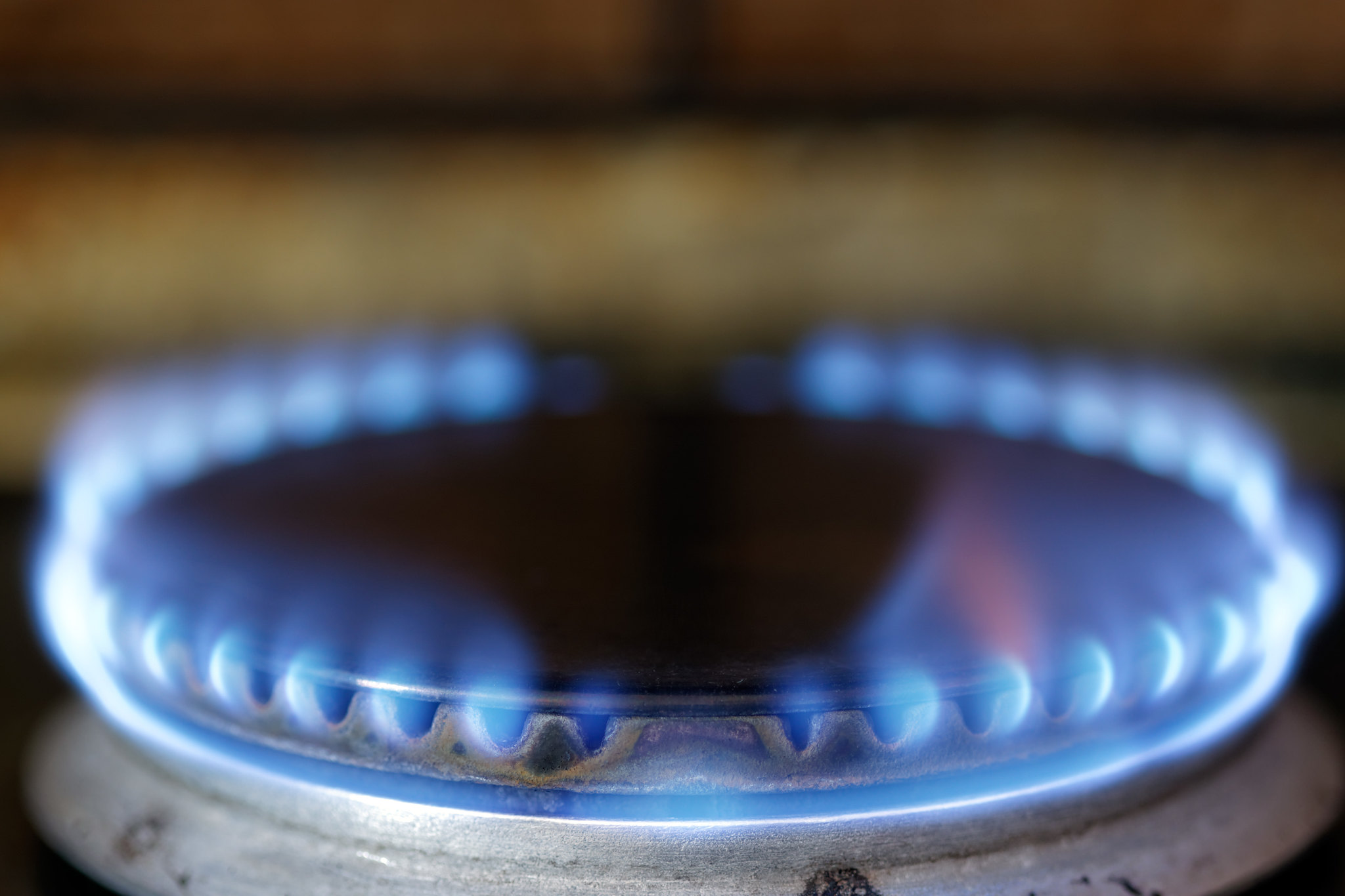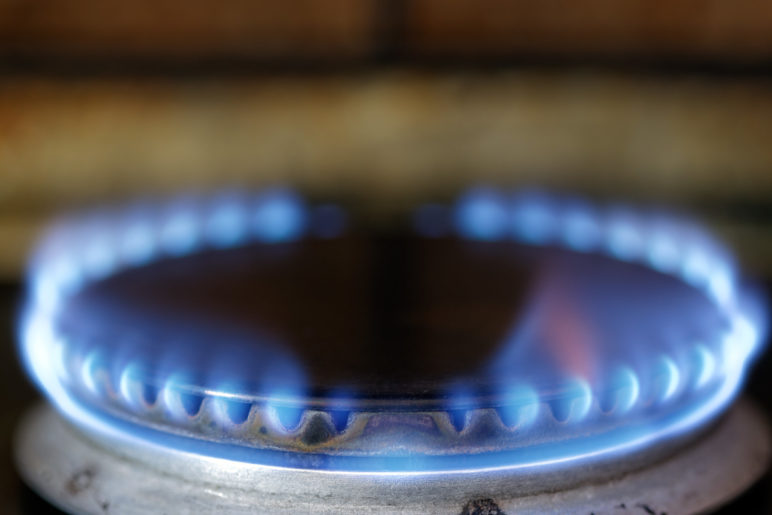To slash carbon emissions, states in the Pacific Northwest need to move directly to electrification, leapfrogging natural gas technologies. But among the barriers to climate success is a surprising obstacle: a small set of energy efficiency laws written by the states themselves. As it turns out, both Oregon and Washington states mandate millions of dollars of spending annually to incentivize consumers to buy gas-fired equipment for their homes and businesses. It’s an unnecessary climate blunder, but one that is easily fixed.
Spurred on by state laws and regulations that mandate conservation programs, every gas utility in the two states offers incentives for customers to upgrade their existing gas appliances to new higher efficiency gas appliances. That makes no sense in an era of rapid decarbonization because these incentives, well-intentioned as they may have been, effectively lock customers into continued gas use (and the emissions that come from it), while encouraging utilities to keep investing in the gas pipelines that serve them. That’s a big problem, because the carbon pollution from energy use in buildings, which consists almost entirely of natural gas used for heating and running appliances, is up 50 percent since 1990. It is the second largest source of climate pollution in the Pacific Northwest.
[T]he carbon pollution from energy use in buildings, which consists almost entirely of natural gas used for heating and running appliances, is up 50 percent since 1990. It is the second largest source of climate pollution in the Pacific Northwest.

All the major decarbonization studies (1, 2, 3) for the Pacific Northwest have a prevailing theme: “electrify everything.” That’s because electrification is the cheapest option for the region to meet its aggressive emissions-reduction goals. In the last half-decade, both Oregon and Washington have been advancing progressive policies for clean electricity and reduced greenhouse gas emissions, but both states are impeding their own progress by requiring continued investment in natural gas space and water heating.
Gas efficiency programs in Oregon and Washington (and, in fairness, many other states) have a long and successful track record of improving efficiency and conservation for the utilities. In Washington, gas efficiency programs were long offered voluntarily by utilities until HB 1257 (2019) made them mandatory starting in 2022. Stipulation agreements, judicially approved agreements negotiated between the Oregon gas utilities and the Oregon Public Utility Commission (PUC), require gas efficiency programs in Oregon. In both states, the funding for these programs—over $60 million annually–comes from existing customers via small charges on their bills assessed on the volume of gas used. All gas customers pay into these incentive programs because all gas customers benefit from the conservation in the form of cleaner air, less pipeline expansion to meet load growth, and reduced risk of price changes in gas commodity markets.
On offer in both states are rebates and grants for two types of measures that can save gas: measures that combust gas and those that do not combust gas. Of the second, examples include building improvements like insulation, weatherstripping, windows, and thermostats—conservation measures that are beneficial regardless of whether the heating system is powered by fossil fuels or clean electricity. These should stay in place. But included in the first type of efficiency measure are upgrades for residential appliances like gas furnaces, boilers, water heaters, fireplaces, and clothes dryers that burn gas to generate heat. These are a climate problem (and a health problem) and they should go away.
Oregon and Washington should end programs that incentivize the adoption of gas combustion appliances, no matter how efficient they may be, because they have the unwanted effect of locking in years of continued gas use and carbon emissions.
Fortunately, a few tweaks to existing statutes and program definitions can redirect incentives away from gas appliances, freeing up millions of dollars for equity-enhancing weatherization programs or even possibly gas-to-electric appliance conversions for existing gas customers. Here are the places to focus:
WASHINGTON
Washington state law (specifically RCW Chapter 80.28) outlines the voluntary and mandatory conservation requirements for gas utilities. For two decades, gas utilities have been operating under the voluntary standards as described in RCW 80.28.303 and will continue to do so until 2022. Legislation in 2019 introduced mandatory requirements, to start in 2022, for gas conservation programs statewide detailed in RCW 80.28.380. The legislature should amend both the mandatory and the voluntary rules (which will remain in effect even after the mandatory requirements kick in) to ensure that utilities cannot offer incentives for combustion appliances. Sightline’s suggested changes keep the spirit of the requirements legislated in the 2019 changes but forestall the risk of giving incentives to gas equipment in cases where electric solutions are readily available.
- To adjust the voluntary requirements, the legislature need only redefine the eligible conservation investments by adding a section (1)(a) (renumber remainder) to the definitions in RCW 80.28.005 that reads:
The conservation measures and services do not produce assets that are designed to directly consume fossil fuels to produce space heat, domestic water heat, and/or clothes dryers (including but not limited to natural gas, petroleum, kerosene, propane, oil, coal).
- To adjust the mandatory requirements, the legislature can edit RCW 80.28.380 to exclude gas combustion appliances:
Each gas company must identify and acquire all conservation measures that are available,
andcost-effective, and non-combusting. Each company must establish an acquisition target every two years and must demonstrate that the target will result in the acquisition of all resources identified as available,andcost-effective, and non-combusting. The cost-effectiveness analysis required by this section must include the costs of greenhouse gas emissions established in RCW 80.28.395. The targets must be based on a conservation potential assessment prepared by an independent third party and approved by the commission. Conservation targets must be approved by order by the commission. The initial conservation target must take effect by 2022.
OREGON
Forty years ago, Oregon passed both residential and commercial energy conservation acts into law, authorizing gas conservation programs and giving authority to the Oregon Public Utilities Commission (OPUC) to oversee their implementation. Since then, OPUC has entered into stipulation agreements with each of the state’s gas utilities that outline the details and requirements of the gas conservation programs. Excluding gas appliances from Oregon’s energy efficiency programs likely requires both modifying existing law as well as negotiating new agreements between OPUC and each gas utility. The changes to the law are a good place to start by modifying the definition of an energy conservation measure in ORS Chapter 469 to exclude gas-burning appliances.
“Energy conservation measures” means measures that include the installation of items and the items installed to improve the space heating and energy utilization efficiency of a dwelling. These items include, but are not limited to, caulking, weatherstripping and other infiltration preventative materials, ceiling and wall insulation, crawl space insulation, vapor barrier materials, timed thermostats, insulation of heating ducts, hot water pipes and water heaters in unheated spaces, storm doors and windows, double glazed windows and dehumidifiers. “Energy conservation measures” does not include the dwelling owner’s own labor. “Energy conservation measures” does not include appliances that are designed to directly combust fossil fuels. (Examples include, but are not limited to, natural gas furnaces, boilers and natural gas water heaters.)
These targeted fixes would prevent further spending on residential and commercial natural gas systems—systems that are more than likely to become expensive burdens as Washington and Oregon pivot away from natural gas in order to reduce emissions as they have planned. The changes Sightline recommends here target natural gas combustion systems while leaving intact incentives for sensible energy-saving solutions like insulation and weatherization for gas-heated buildings. It’s one of the easiest ways imaginable for Pacific Northwest states to align their utility programs with their climate goals.











